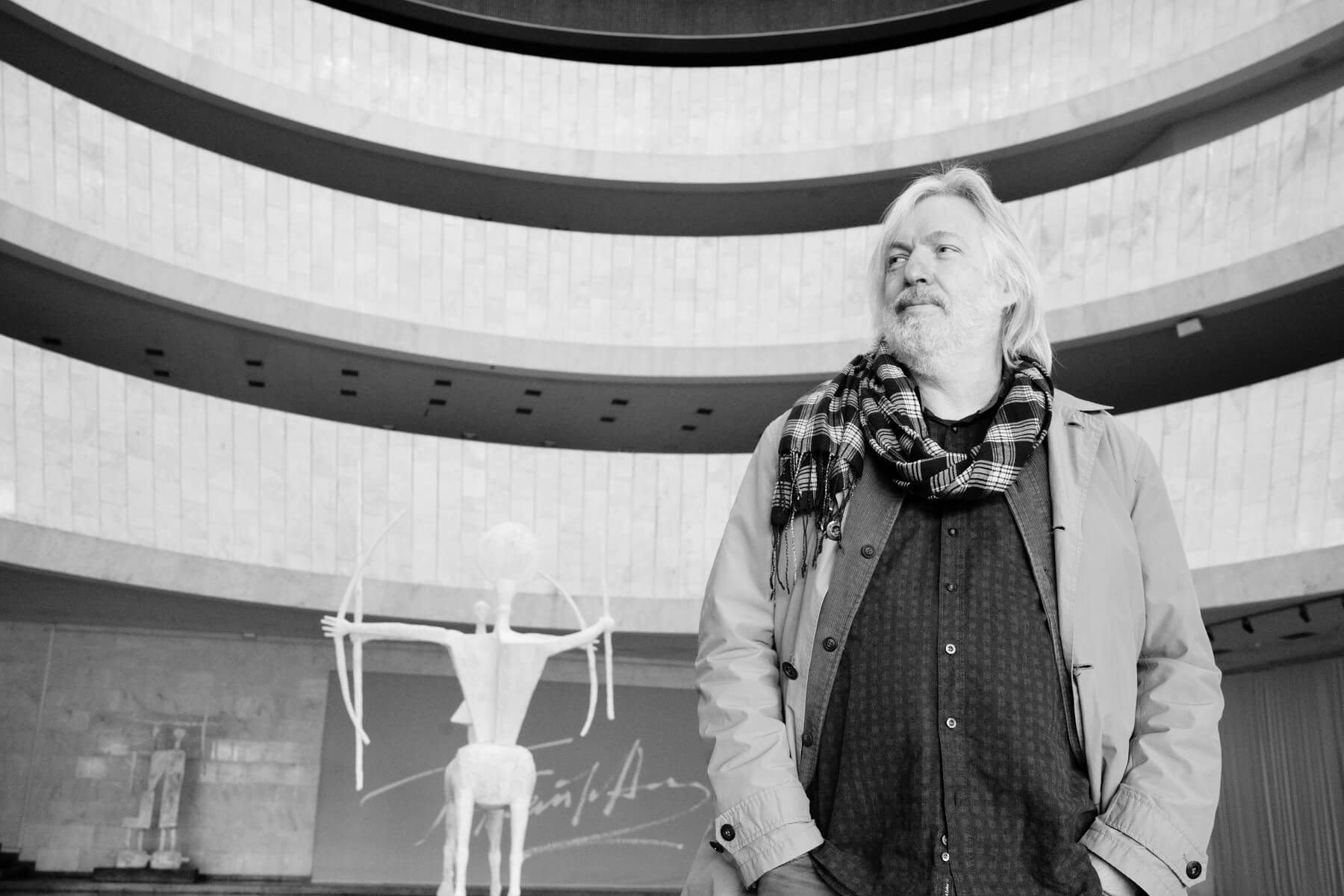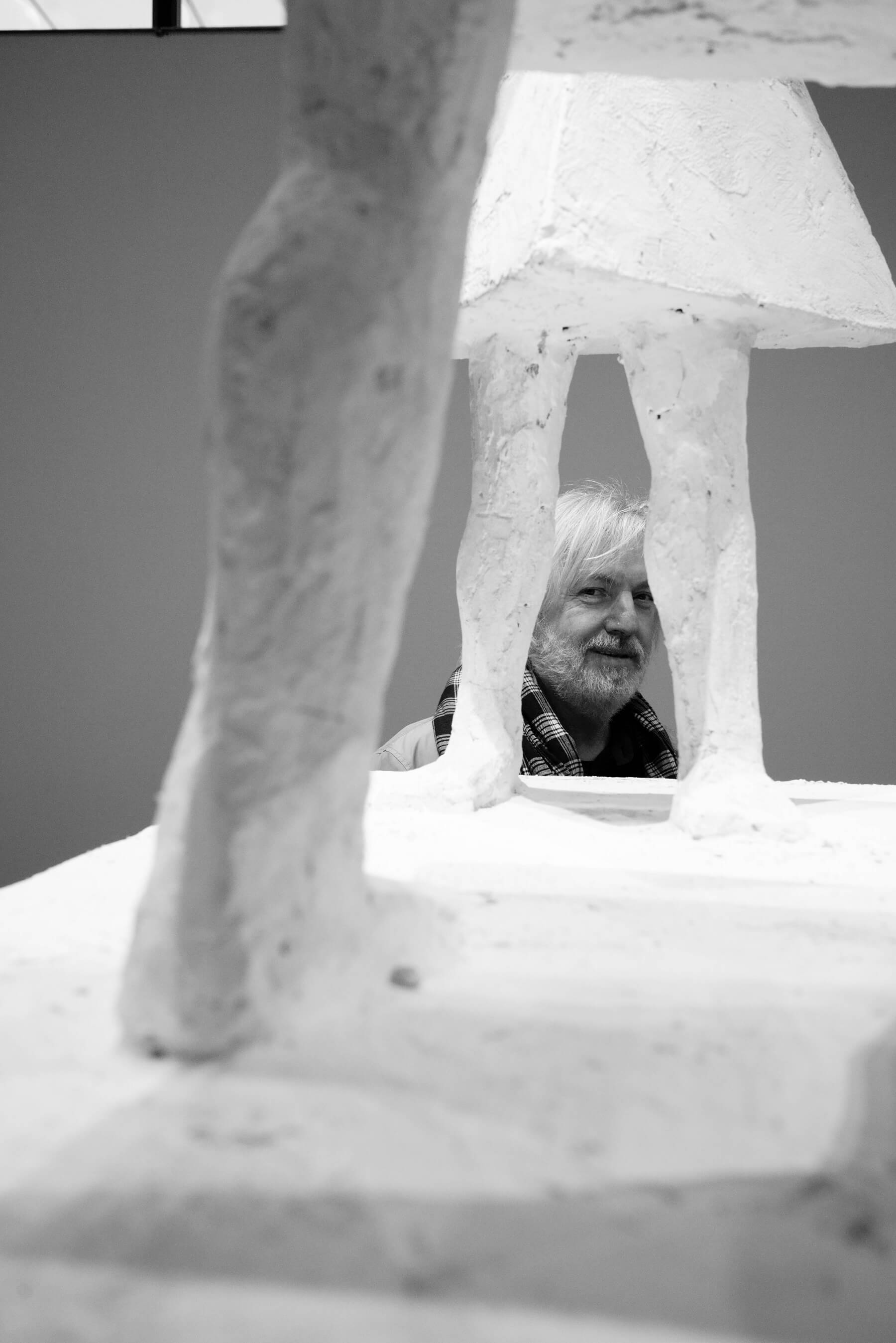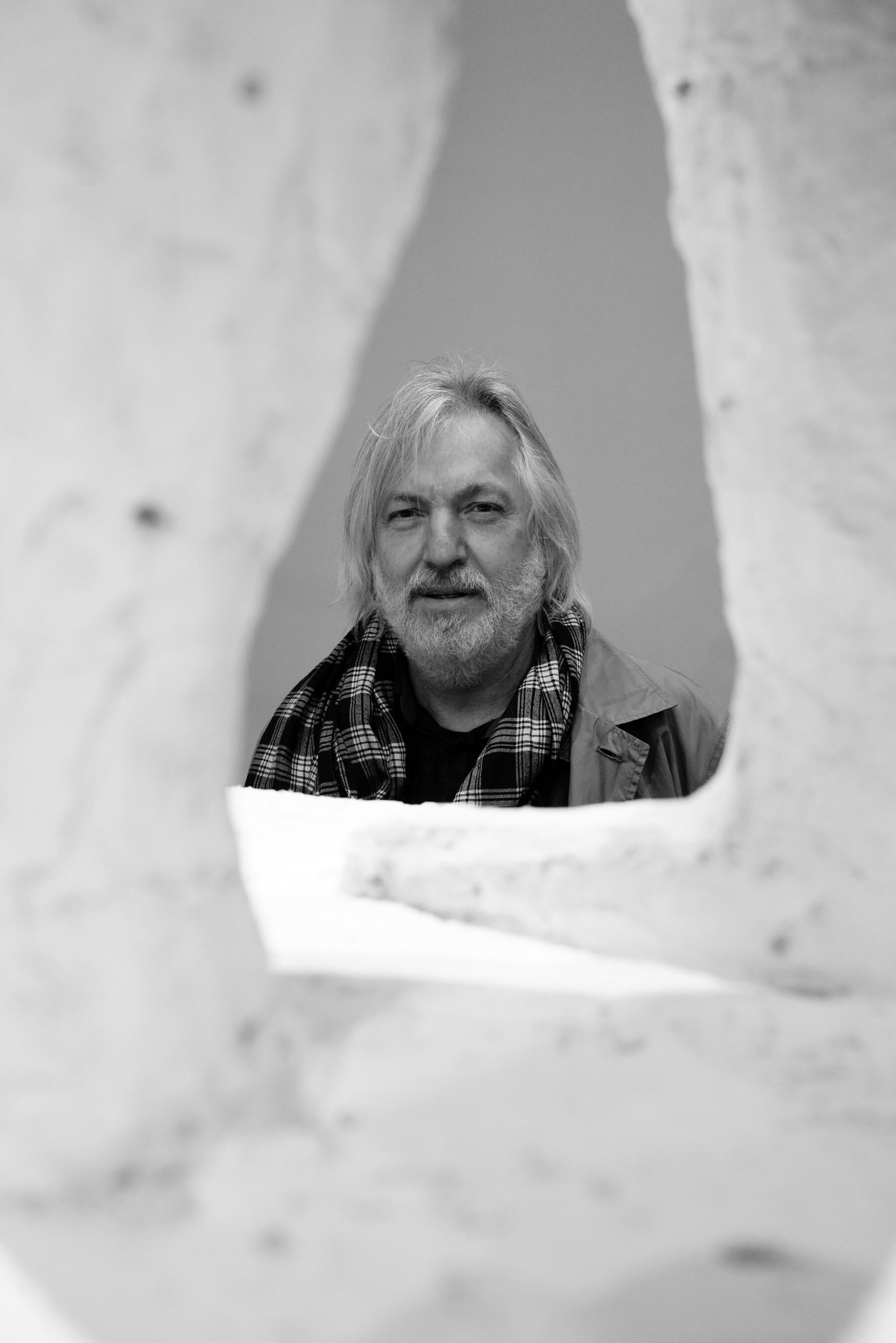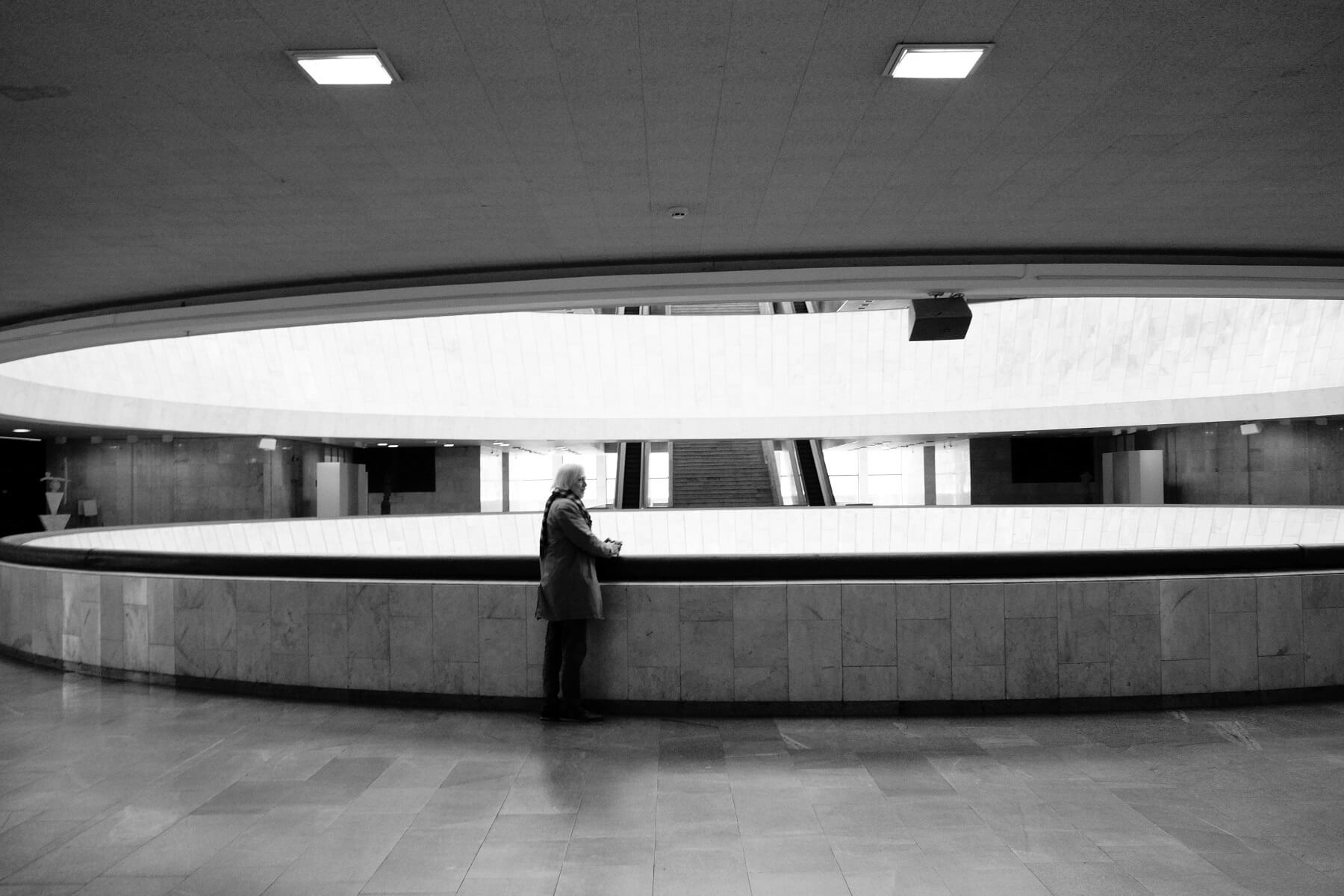Ukrainian sculptor, painter, graphic artist, writer, Honored Artist of Ukraine (2009). Member of the National Union of Artists of Ukraine (1989). Representative of the New Wave. He was born in Horlivka, Donetsk region. Since the beginning of the war, he has been living and working in Kyiv.
At what point in your life did you realize that you were an artist?
— At forty.
How did it happen?
— I started to feel my world, my light, at forty-three or forty-four years, somewhere like that. Although I have long been formally an artist. At twenty-eight I was already a member of the Union of Artists of the USSR. I had exhibitions in Paris, Moscow, Kyiv, and Lviv.
What event prompted you to such self-awareness?
— No event. I just found my world, that's all. The artist is valuable for his individual world, his attitude to the world.
That is, you just at one moment felt that a special concept of the world had developed inside you?
— Let it be, let it be…

In 1990 you visited Paris for the first time. It was your first time abroad. What did you feel?
— I got off the plane then and thought that it was something cosmic, some kind of cosmic future. Moving stairs, glass everywhere. The architecture just nailed me. Chewing gum, gifts — it's not that. Architecture... By the way, I didn't vote for independence, I was in Paris at that time. That was my second time in Paris.
And what impression did Parisian art make on you? Liberty? Different life?
— All about freedom is a fairy tale. We just walked around with my friend, Seryozha Novikov, through the galleries, offering our work. Like morons. Ir doesn’t work like that, but no one then told us about it. We visited Louvre, of course, but I was more impressed by the architecture than everything else. Such powerful energy…
What artists, writers, creative people influenced you?
— No one, and a little bit of everything ... I would reformulate: who helped in a career, breakthrough ... This is Yulik Sinkevych, a Kyiv sculptor, he helped a lot. He helped me in Ukraine. I studied in Russia, I didn't know anyone.
And in purely artistic terms, you can not single out any influences on yourself?
— Well, I love Rembrandt, Braudel. I love many. The most important thing is for the artist to be honest. How not to learn from Michelangelo, for example? Until the evening I can list great artists for you… I love our Donbas steppe sculpture — stone women. This is very important for me ... There is a code, the energy is collected right in the stone. There is a concept of sculptural hearing, does it make sense?

Interesting... What is it?
— This is not a conversation for an interview, these are professional things already.
Well, anyway, in general terms.
— Not every person has it — it's genetics, masculinity, that's all. Organizing a sculpture in space is not something everyone will do. Not every artist. Not every student.
That is, this property is intuitive, it is given by nature?
— Oh sure. A person is born with sculptural hearing, you can't teach him or her. Out of ten students in the arts, if one has a hearing, that's very good. I tell you, I was embarrassed to say that I was an artist until the age of forty.
And what do you mean by the concept of the artist? Art? What it is?
— This is a person who has his or her own world, brings peace to others. This person plants his or her own garden, so to speak. This is a whole science. There must be science behind the art.
Science and intuition?
— Probably.

Your exhibition is called Modern Archaic. What do you put into this title?
People are just remodeling the archaic. Here, many Kyiv artists simply remodel stone women. I want to create new sculptures without re-sculpting. The sculpture has its own laws, right? We are fighting for new forms. Everyone writes about love: Shakespeare wrote about love, Shevchenko wrote about love, Dante. But each had its own form. So I create a Scythian woman, a Pecheneg woman with new forms, from geometric shapes. For me, a triangle, for example, is a harmonic figure on which the whole world rests. This is an opportunity for a person to “catch” some kind of cosmic energy.
Why are you attracted to the archaic form? Why are you rethinking it?
— Because I was born in the Donbas. The steppe is very close to me, the sky is very close to me, the grass. This all is mine. It has its own very interesting philosophy, huge free space. I do not like isolation, I love the steppe.
Are you trying to convey the feeling of steppe freedom in your sculptures?
— Yes.
In your opinion, the concept of modern archaism, in fact, the return of modernist practices, is this relevant art?
— All art is relevant. Each person chooses what he or she wants. One likes the classics, the other academism. People are different.
That is, now we cannot say that there is one big style in art?
— There have never been big styles, never.
Never? But what about, for example, romanticism in the first half of the 19th century? Now traditionally, postmodernism is called the great style of the era ...
— Let them write dissertations, articles. A lot of art critics work with me — from Lviv, from Kharkiv. This is not a question for me. I'm not interested. They write ‘postmodernism’ — okay, I don't go there.
That is, you do not think about any theoretical issues of art?
— Absolutely…
Do you consider your political and patriotic activities in the pre-war Donbas a continuation of your work in art?
— I think I've become a better artist because of it. Any public person must be a citizen. I did a lot for the Ukrainian Donbas: I invited famous writers, financed patriotic parties, we brought interesting books, we had discussions with Levko Lukyanenko, modern Ukrainian rock musicians performed here — a lot of things.
You recently published a book "A big fairy tale about a little boy." What prompted you to turn to literature?
— I decided to write a fairy tale for my grandchildren, give them some valuable lessons and advice in a fairy tale. Because it so happened that I did not spend much time with them. And this is how I compensate. It is dedicated to my grandchildren, and the grandchildren of my friends, and in general to all the grandchildren that I don't even know.
Is it a philosophical fairy tale by genre?
— It's a parable, I think.
What writers did you focus on when you were working on the fairy tale?
— I love Hermann Hesse, Gogol. Lots of writers. As a child, I used to get only bad marks because I read a lot.
How so?
— Well, Jules Verne always lay on top of a textbook on physics. I could not tear myself away from this book. When I was already studying at an art school, I understood what balance is. I read a lot and drew a lot, and I wanted to keep a balance between these activities.

Are you reading anything now?
— Not so much, mostly non-fiction. Books, painting, have a very bad effect on the child, on the artist.
Why?
— Because you fall under someone's strong artistic influence, you cannot form as a person simply. You will become a little Velazquez, a little Picasso, and not yourself. This is very bad.
What is the way out, what do you think?
— Do you know the difference between Soviet and European art schools? In the Soviet school, ideology already existed, they taught only the technique of drawing, while the Europeans almost do not teach technique, they develop the personality. Because if you are developing personality yourself, technique, skill, courage will definitely come!
Ukrainian sculptor, painter, graphic artist, writer, Honored Artist of Ukraine (2009). Member of the National Union of Artists of Ukraine (1989). Representative of the New Wave. He was born in Horlivka, Donetsk region. Since the beginning of the war, he has been living and working in Kyiv.